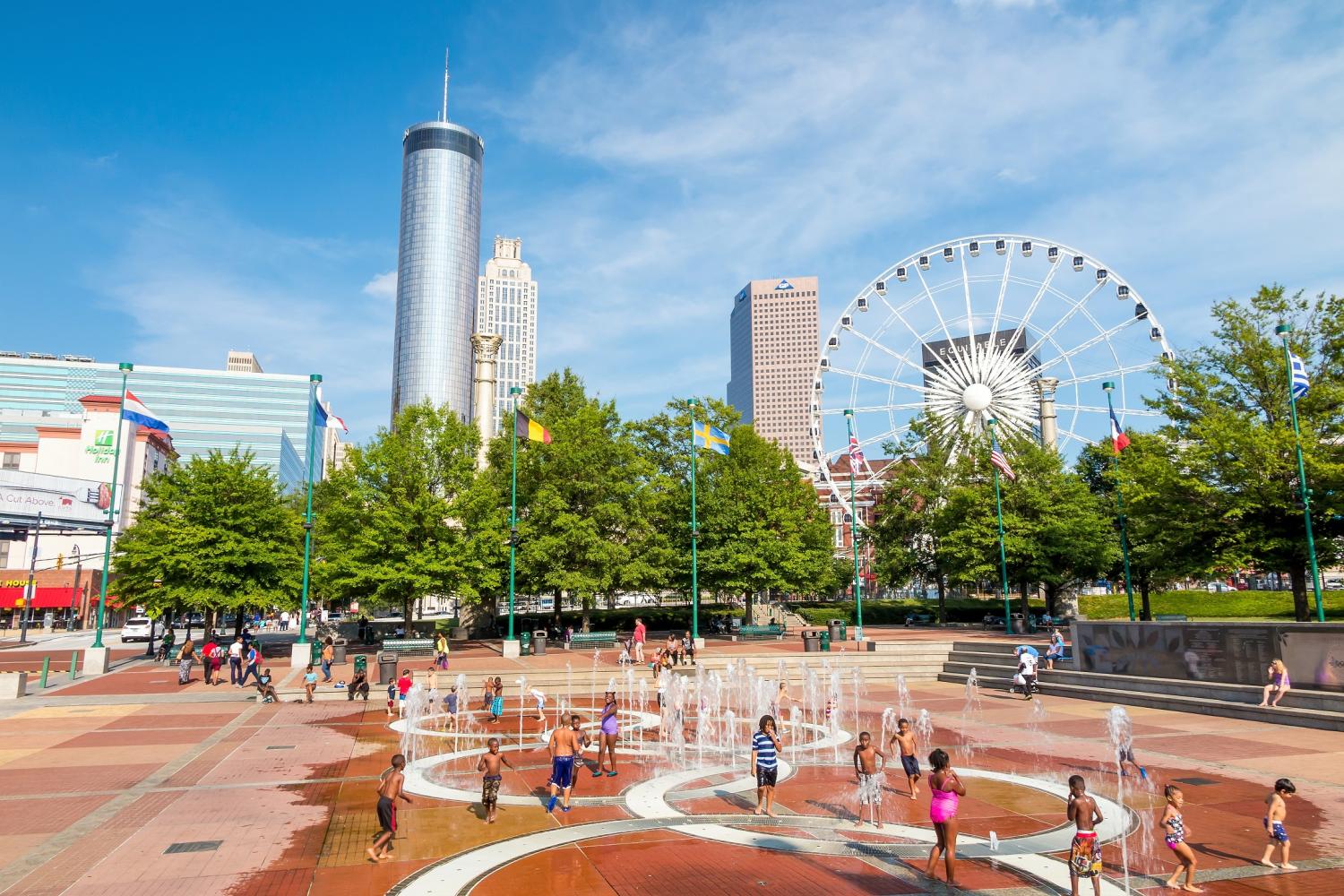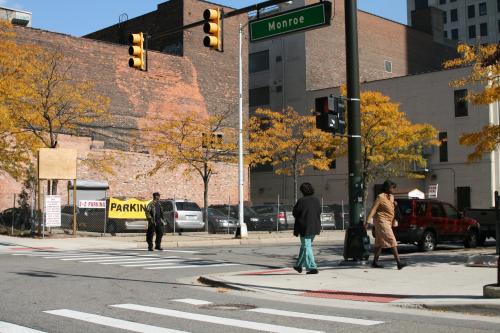Contents
- How did the new black-majority cities come about?
- Black-majority cities have emerged in different ways across U.S. regions
- Suburbanization also drove black-majority cities’ emergence
- Black-majority cities are here to stay
American cities in which blacks constitute a majority of the population—what we call “black-majority cities”—are on the rise. They include the core cities of metropolitan areas like Detroit, Baltimore, and Memphis as well as smaller suburban municipalities like East Cleveland, Ohio, Wilkinsburg, Pa., and Ferguson, Mo. Black-majority cities (which include cities, towns, and other census-designated places) numbered 460 at the 1970 census, and 1,148 by the 2010 census. And, as of the latest census estimates (2017), there are now 1,262 black-majority cities, an increase of more than 100 such cities during this decade alone.
Black-majority cities are rising amid a national conversation surrounding whether they can improve and develop while retaining their black majority. With these places often beset by white flight and home devaluation, which totals $156 billion in losses nationally, planners and sociologists use ominous words like “gentrification,” “merger,” “annexation,” “bankruptcy,” and “de-annexation” to convey a positive strategy for renewal and growth in black-majority cities.
Yet black-majority cities have assets worth building upon, investing in, and fighting for. Black-majority neighborhoods hold $609 billion in owner-occupied housing assets and are home to approximately 10,000 public schools and over 3 million businesses, according to a recent Brookings-Gallup analysis on home values. But none of these assets are greater than the people and culture within black-majority cities. Black-majority cities matter like the black lives in them. The fight for leaders to retain autonomy and sovereignty—while demanding respect—reflects their recognition of the value in black-majority cities.
How did the new black-majority cities come about?
From 1970 to 2010, the total number of census-recognized cities grew by nearly 50 percent. But most of today’s black-majority cities—more than 800 of the 1,148 in 2010—already existed in some form in 1970. Moreover, the black share of the U.S. population rose only slightly over this period, from 11.1 percent in 1970 to 12.6 percent in 2010. Therefore, the emergence of black-majority cities reflects more than anything else a changing demographic landscape between and within cities. A new great migration and intra-metropolitan movement have reshaped urban, suburban, and rural communities, facilitating the rise of today’s black-majority cities.
An existing city’s transition to a black-majority can occur as both black and non-black populations either increase or decrease. To better understand the demographic dynamics giving rise to black-majority cities, Figure 1 below indicates where these cities fall within a typology based on the direction in which total black and non-black populations have trended. Each dot represents an individual black city. We apply this typology to all U.S. cities in which population figures exist for each decennial census from 1970 to 2010, and the median total population of those figures exceeds 2,500. However, only the black-majority cities (as of 2010) are shown in Figure 1.
- Cities in the Boomtowns quadrant gained both black and non-black population from 1970 to 2010.
- Cities in the White Flight quadrant gained black population, but experienced a decrease in non-black (largely white) population.
- Cities in the Suburbanized quadrant lost both black and non-black population.
- Cities in the Gentrified quadrant lost black population, but gained non-black population.


This typology uncovers two basic truths:
- The fact that so many White Flight and Gentrified cities even exist shows that the change in black population of U.S. cities is not always a function of the change in its total population.
- While White Flight is the most common trajectory, it is not the only way in which black-majority cities have gained their majority.
Black-majority cities have emerged in different ways across U.S. regions
While most cities across the U.S. fall in the Boomtowns category, most black-majority cities are classified as White Flight cities. But this pattern differs across U.S. regions, reflecting large-scale social and economic changes affecting the settlement patterns of black and non-black populations over the last several decades.
Both contemporary and historical migration patterns thus explain why black-majority cities are overwhelmingly located in the South (Figure 3). There, they largely fall in the White Flight cities category, although growing core cities like Charlotte, and burgeoning suburban areas in states like the Carolinas, Georgia, Florida, and Texas, account for Southern Boomtowns.
That Boomtown trajectory is the most common among all U.S. cities in all regions except the Northeast. There, White Flight cities outnumber them. That region overall has a relatively small number of black-majority cities, even fewer than in the Midwest, thanks in part to the increased migration of their black populations to the South.
That migration deeply impacted the composition of metropolitan areas and large cities in the Midwest such as St. Louis, Detroit, and Cleveland, which experienced significant population loss among both black and non-black populations. These reductions were compounded by the suburbanization of the remaining black population, resulting in a White Flight cities classification for most Midwestern black-majority cities.
The West has fewer cities overall than other regions, and the bulk of them are Boomtowns, having experienced growth in both black and non-black populations. With rapid population growth and little white flight—at least for entire cities—blacks are a fixture of Western cities, but rarely a majority.

Not since the Great Migration, a period from 1916 to 1970 during which as many as six million blacks migrated north and west from the South to seek new opportunities and escape oppression, have black-majority cities’ demographics shifted so profoundly. As our Brookings colleague Bill Frey writes in Diversity Explosion, “What began as a small African American migration back to the South in the 1970s and 1980s, turned into a more substantial movement during the 1990-2010 period, as new generations of blacks, including professionals and college graduates, favored economically rising Southern states such as Georgia, Texas, North Carolina and Florida; states to which many still held strong cultural and family affinities.”
This reversal of sorts of blacks’ mass exodus from the South (dubbed the “New Great Migration”) led to gains in black population for some large Southern cities such as Memphis, and little net gain for others experiencing rapid suburbanization, such as Atlanta. Nevertheless, the wider metropolitan effect of the New Great Migration on the South meant that suburbs of both Memphis and Atlanta alike saw increases in black population, and subsequently witnessed a rise in black-majority cities (see Figure 4).
Suburbanization also drove black-majority cities’ emergence
Black suburbanization was another driving force in the development of black-majority cities. This mass relocation from core cities to inner- and outer-ring suburbs allowed for access to less segregated communities than the (often older industrial) principal city nearby. However, as metropolitan white populations moved toward outer-ring suburbs, an increasing number of black-majority cities could be found in inner-ring suburbs. Today, White Flight cities in the 100 largest U.S. metro areas are located much closer to the urban core, on average, than Boomtowns that have gained both black and non-black population (Figure 5).

This is plainly apparent in and around many other large cities, including Washington, D.C. St. Louis, Detroit, Minneapolis, and Chicago, which in particular has gone through what Pete Saunders refers to as a “black exodus.”
Black-majority cities are here to stay
The last 50 years have given rise to a large, varied class of black-majority cities—both urban and rural, both new and old. However, the rise in the number of black-majority cities isn’t because the country is becoming significantly blacker (the share of blacks in the country has only increased by 1.5 percentage points since 1970), but because of shifts within and between regions and metropolitan areas. This growth is continuing amid a national conversation about the U.S. becoming minority white in approximately 2045, a forecast due in large part to the increasing numbers of Hispanics and immigrants in national population totals. Demographic shifts anticipated at the national level have already occurred in many cities, and others will continue to grow and shift in composition as well.
The migration of blacks to blacker cities is broadly a quest for opportunity, sustainability and investment. Where blacks congregate says a lot about where they don’t, and how black people live in black-majority cities foretells how other racial/ethnic groups will progress as more cities become minority-white in the future. Therefore, the development and growth of black-majority cities presents an opportunity. Recognizing the worth of black-majority cities will test our nation’s ability to build upon the strengths that diverse communities provide, so we can all grow positively into our inevitable, collective future.











